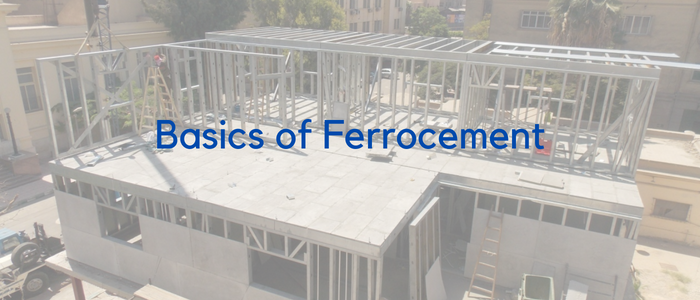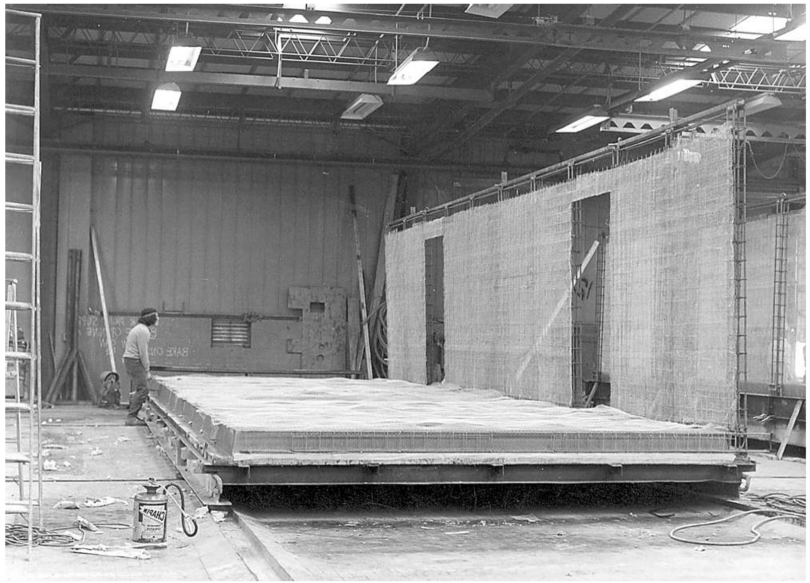Basics of Ferrocement
What is Ferrocement?
Ferrocement Definition: a composite structural material comprising thin sections consisting of cement mortar reinforced by a number of closely spaced layers of steel wire mesh.- ACI 549R-97 [Report on Ferrocement by ACI Committee 549]
Ferrocement is a composite structural material (a form of reinforced concrete) that is different from the normal (conventional type) concrete mainly by the way it is reinforced. The reinforcement in ferrocement is a number of closely spaced layers of steel wire mesh within the mortar. Thus, we can say that ferrocement is typically composed of cement, fine aggregate such as sand, water, admixtures (so far the same materials used for normal mortars) and in addition, reinforcing mesh and rods. Generally, thin panels or sections of ferrocement (25 mm thick) uses only a thin mortar cover over the outermost layers of reinforcement. More on the materials used in ferrocement here [Ferrocement Materials: What is the mix made of?]
This method of reinforcement makes ferrocement behaves differently from the traditional type of reinforced concrete in terms of strength and deformation, and accordingly, the applications.
Steps for Ferrocement Construction
There are four steps for the construction of ferrocement that resembles the traditional construction methodology of mortar:
- Fabricating the steel rods to form a skeletal framing system
- Tying or fastening rods and mesh to the skeletal framing
- Plastering
- Curing
Fabrication Procedure
The goal of all construction techniques is to encapsulate thoroughly and efficiently all the layers of mesh within the portland cement matrix.
Traditionally, Workers tie the layers of mesh to a framework of rods. Then, mortar is forced though this armature, and finished on both sides by conventional plastering techniques. However, this technique require externsive labor number and efforts. It is also susceptible to construction defects such as voids. Rods are inefficent since they are not loaded to their strength and thus implies a lot of waste. A remarkable increase in strength-to-weight ratio was obtained with mesh only.
Rods were eliminated through the application of mortar to layers of mesh supported by moulds constructed from wood strips, plywood, etc. Then, hand-held vibrators are used to assist with the penetration of mortar into the mould. This process is performed using laminating techniques to reduce voids, escalate the rate of production and at the same time reducing labor cost.
Steps of the Laminating Process
- A 2 to 3 mm-thick layer of mortar is initially sprayed or applied by hand to a mould and allowed to develop some initial set. This first layer may contain latex or other materials to provide special properties to the surface of the finished product.
- Apply a second layer of mortar and, while still soft, strips of mesh are embedded by a roller tool.
- More layers of mortar and mesh are applied until the desired thickness of ferrocement is obtained.
Advantages of Ferrocement
Ferrocement is suitable for application in a wide range of construction projects due to its versatility, durability and cost efficiency.
Ferrocement possesses a very high tensile strength-to-weight ratio and superior cracking behavior in compared to the conventional reinforced concrete. This indicates that we can develop structures of lighter weight and at the same time have higher resistance to water penetration (since cracking resistance is higher). Domes, wind tunnels, roof shells, mobile homes, modular housing parts, tanks, and swimming pools are examples of what can be done with ferrocement.
Since formwork is usually not required, in contrast to conventionally reinforced concrete construction, ferrocement is especially suitable for structures with curved surfaces, such as shells and free-form shapes.
Ferro cement is applied with pressure over the mesh matrix. The mortar holds in position because of the mechanical interlocking. So No shuttering is required to cast ferrocement components.

